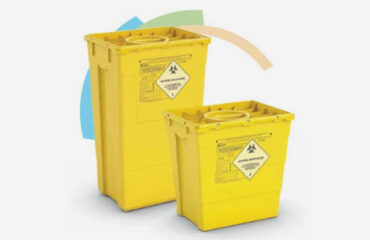The Of Reclaim Waste
The Of Reclaim Waste
Blog Article
The Only Guide for Reclaim Waste
Table of ContentsSome Ideas on Reclaim Waste You Should KnowReclaim Waste for DummiesThe Ultimate Guide To Reclaim Waste3 Simple Techniques For Reclaim WasteSome Ideas on Reclaim Waste You Need To Know
Check out the types, incidents, and types of liquid waste. Residential sewer waste refers to the waste and products from a property sewage-disposal tank. This kind of waste is created by humans in homes, institutions, and various other buildings. This only includes sewage-disposal tanks that have a drain field. The appropriate management and disposal of domestic sewer waste need liquid waste to be transferred to a sewage therapy plant where the proper approaches and equipment are related to purify and get rid of waste.
Industrial waste commonly consists of potential threats, such as flammable products or a blend of liquid and solid waste products, and requires an advanced and in-depth disposal process. The disposal of business waste usually includes the filtering of waste prior to transportation to guarantee safe and proper disposal. Industrial waste is produced from byproducts and runoff of commercial processes and manufacturing.
This sort of waste can not make use of the exact same sewage administration transportation or processes as septic or commercial fluids. The hazardous waste management procedure needs the examination and testing of fluid waste prior to it undergoes the disposal process (liquid waste disposal). Overflow waste is the fluid waste that comes from runoff and excess stormwater in highly populated locations or cities
Drainage waste can trigger contamination and flooding otherwise handled appropriately. Find out more regarding drain cleansing and waste administration. Ensuring proper waste management can avoid calamities and decrease ecological damage. Both people in property settings and specialists in commercial or production sectors can take advantage of recognizing the procedures and regulations of fluid waste administration.
How Reclaim Waste can Save You Time, Stress, and Money.
Contact PROS Solutions today to discover regarding our waste management and disposal services and the correct means to take care of the liquid waste you produce.
(https://www.goodreads.com/user/show/183557660-leon-aube)This supposed 'wastewater' is not just an important source but, after treatment, will certainly be released to our land, rivers or the ocean. Made use of water from commodes, showers, bathrooms, kitchen area sinks, washings and industrial procedures is recognized as wastewater.

water utilized to cool down machinery or clean plant and tools). Stormwater, a form of wastewater, is runoff that streams from agricultural and metropolitan locations such as roofings, parks, gardens, roadways, paths and gutters into stormwater drains pipes, after rainfall. Stormwater moves neglected straight to regional creeks or rivers, ultimately getting to the ocean.
The Basic Principles Of Reclaim Waste
In Queensland, a lot of wastewater is dealt with at sewage therapy plants. Wastewater is carried from domestic or industrial sites with a system of drains and pump terminals, recognized as sewerage reticulation, to a sewer treatment plant.
The Division of Natural Resources encourages regional federal governments about handling, operating and keeping sewerage systems and treatment plants. In unsewered locations, local governments may require owners to install private or house sewage treatment systems to deal with residential wastewater from toilets, kitchen areas, restrooms and washings. The Division of Natural Resources authorises using house systems when they are confirmed to be efficient.
In some brand-new communities, treatment of some stormwater to eliminate clutter, sand and crushed rock has started using gross pollutant catches. Wastewater treatment happens in 4 phases: Removes solid matter.
Wastewater after that streams into large storage tanks where solids clear up and are eliminated as sludge. Oil and scum are skimmed from the surface area. Uses tiny living microorganisms knows as micro-organisms to break down and get rid of remaining liquified wastes and fine fragments. Micro-organisms and wastes are integrated in the sludge. Removes nitrogen and phosphorus nutrients that might create algal flowers in our waterways and intimidate water life.
Top Guidelines Of Reclaim Waste
Nutrient elimination is not offered in any way sewage treatment plants due to the fact that it calls for costly specialized devices. It is ending up being extra usual in Queensland. Clear liquid effluent produced after therapy may still include disease-causing micro-organisms. If this effluent is launched right into waterways such as rivers or the sea, the micro-organisms will at some point pass away out.

This usually means wastewater has actually to be treated or pollutants gotten rid of before it can be released to waterways. Most wastewater moves right into the sewerage system. Under the Act, neighborhood federal governments carry out authorizations and permits for ecologically pertinent activities (Ages) including wastewater releases that may have a local influence. The department provides this article authorizations and licences to Periods entailing wastewater releases that could have a local or statewide impact.
Reclaim Waste for Dummies
Tracking provides factual information concerning water top quality and can confirm that permit conditions are being fulfilled. The information obtained via surveillance offers the basis for making water top quality choices.
Report this page